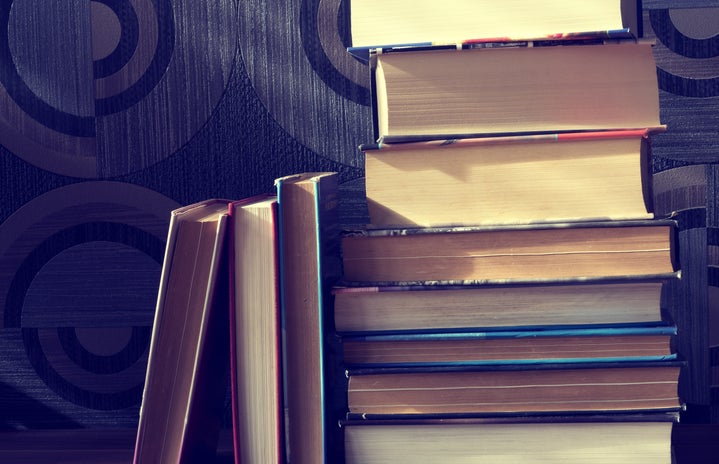Maybe now that these aren’t assigned readings, you can enjoy them more. There’s something about being told what to read, when to read it, and how to read it that is so discouraging. Despite the unfavorable-high-school-English-class context in which lots of classics texts are taught, they are really invaluable works of literature. However, it’s totally understandable that the true beauty of those texts can be lost along the way, between chemistry homework, choir rehearsal, and ever-present teenage angst and drama. Maybe now that summer’s here, free time is a real thing, and some of that high school drama has (hopefully) subsided over the past couple of years, you can sit back and enjoy one of these books more the second time around.
1. A Clockwork Orange by Anthony Burgess
The underlying messages of freedom and agency are themes that are all too relevant during our years of exploration in college. Plus, the questions “What constitutes good?” and “What constitutes evil?” are larger-scale inquiries, which could probably put your Philosophy 101 knowledge to the test.
2. Wuthering Heights by Emily Brontë
Like many college students, Heathcliff is a massively misunderstood character in Brontë’s classic. His search for belonging isn’t that different from each of ours, though the setting of 19th century England does vary a bit from 21st century rural Minnesota.
3. The Picture of Dorian Gray by Oscar Wilde
This book is utterly thought provoking. Though I once passed off Dorian Gray’s vain nature as something exclusive to his character, reading the story now makes me critically think about our society’s fascination with all things beautiful and the materialistic world in which we live.
4. The Joy Luck Club by Amy Tan
I’m a sucker for books with multiple points-of-view, however, the true charm of this book to me has always been the genuine growth of the mother/daughter relationships throughout the story. Many college students, women especially, develop stronger relationships with their parents after leaving for college. College has solidified my mom’s place as my best friend, so reading this book makes me appreciate my close relationship with her that much more.
5. One Flew Over the Cuckoo’s Nest by Ken Kesey
The rebellious nature of protagonist McMurphy is truly admirable, and re-reading this book really emphasizes the constant power struggle between him and matriarch Nurse Ratched (or as I called her in high school because I thought I was really funny, “Nurse Ratchet”). This book is vastly political, with domineering Nurse Ratched working as a symbol for the powers that be, which is an element that I didn’t thoroughly understand during my first reading experience.
6. The Great Gatsby by F. Scott Fitzgerald
F. Scott Fitzgerald’s classic novel has found its way onto many people’s lists of favorite books that they read whilst in high school, for good reason. The story of Jay Gatsby is tragically beautiful, accompanied by Fitzgerald’s glorious prose. Re-reading this one will definitely make you question life and how you’re living it.
7. Pride and Prejudice by Jane Austen
Elizabeth Bennet is the ultimate 19th century female protagonist—she’s strong-willed, independent, and true to herself. She stands firm in her beliefs (even if they sometimes get her into some sticky situations), but that’s not unlike many of us today. She even pilots the practice of “companionate marriage”, which up until Austen’s era was unheard of.
8. The Catcher in the Rye by J.D Salinger
This novel is complex—the type of complex that means that my high school reading of it was surface-level, at best. Holden Caulfield is a truly intriguing protagonist, with a narration-style that is entirely unique. The book’s synopsis regards it as a “classic novel of teenage angst and rebellion” and I believe that being stuck in the age of teenage angst and trying to grasp this novel is probably near impossible; having experienced that angst and outgrown it gives college-aged readers an entirely new perspective with which to experience the story.
9. Lord of the Flies by William Golding
This is another work that has a much deeper meaning once you gain a bit more life experience. The self-established hierarchy on the novel’s island is a brutal, vengeful system, which brings about a lot of questions about social order and right versus wrong.
10. Frankenstein by Mary Shelley
When I read this in high school, I didn’t realize just how universal The Creature’s experience is. He’s unfairly brought into the world, his creator utterly resents him, and he is left feeling abandoned and alone. ALL HE WANTS IS LOVE! It’s no wonder he lashes out the way he does. The second time through I discovered a whole new perspective of The Creature (yes, Creature, not “Monster”) and I developed an entirely new definition of “empathy”.
10. To Kill a Mockingbird by Harper Lee
With the newer release of Go Set a Watchman, Harper Lee’s original publication could be forgotten. However, this beloved novel has remained a classic for a reason. It’s thought provoking and opens up the huge question for audiences, “What is justice?” With a society that is still working to overcome stereotypes, prejudice, discrimination, and racism, this classic and its story about standing strong for what is right remain timeless.

